3D Printed High Gain Complementary Dipole/Slot Antenna Array
Abstract
Featured Application
Abstract
1. Introduction
2. Design and Fabrication of a 16 × 16 Complementary Dipole Antenna Array
3. Measured and Simulated Results
4. Conclusions
Author Contributions
Funding
Conflicts of Interest
References
- Rappaport, T.S.; Sun, S.; Mayzus, R.; Zhao, H.; Azar, Y.; Wang, K.; Wong, G.N.; Schulz, J.K.; Samimi, M.; Gutierrez, F. Millimeter wave mobile communications for 5G cellular: It will work! IEEE Access 2013, 1, 335–349. [Google Scholar] [CrossRef]
- Katz, O.; Malka, D. Design of novel SOI 1 × 4 optical power splitter using seven horizontally slotted waveguides. Photonics Nanostruct. Fundam. Appl. 2017, 25, 9–13. [Google Scholar] [CrossRef]
- Shoresh, T.; Katanov, N.; Malka, D. 1 × 4 MMI visible light wavelength demultiplexer based on a GaN slot-waveguide structure. Photonics Nanostruct. Fundam. Appl. 2018, 30, 45–49. [Google Scholar] [CrossRef]
- Nikolaevsky, L.; Shchori, T.; Malka, D. Modeling a 1 × 8 MMI green light power splitter based on gallium-nitride slot waveguide structure. IEEE Photonics Technol. Lett. 2018, 30, 720–723. [Google Scholar] [CrossRef]
- Coetzee, J.C.; Joubert, J.; Tan, W.L. Frequency performance enhancement of resonant slotted waveguide arrays through the use of wideband radiators or subarraying. Microw. Opt. Technol. Lett. 1999, 22, 35–39. [Google Scholar] [CrossRef]
- Oh, S.S.; Lee, J.W.; Song, M.S.; Kim, Y.S. Two-layer slotted-waveguide antenna array with broad reflection/gain bandwidth at millimeter-wave frequencies. IEEE Proc. Microw. Antennas Propag. 2004, 151, 393–398. [Google Scholar] [CrossRef]
- Lee, B.; Harackiewicz, F.J.; Jung, B.; Park, M.J. Cavity-backed slot antenna array for the repeater system of a satellite digital multimedia broadcasting service. IEEE Antennas Wireless Propag. Lett. 2005, 4, 389–392. [Google Scholar] [CrossRef]
- Huang, G.L.; Zhou, S.G.; Chio, T.H.; Hui, H.T.; Yeo, T.S. A low profile and low sidelobe wideband slot antenna array feb by an amplitude-tapering waveguide feed-network. IEEE Trans. Antennas Propag. 2015, 63, 419–423. [Google Scholar] [CrossRef]
- Lee, B.; Jung, K.; Yang, S.H. High-efficiency planar slot-array antenna with a single waveguide-fed cavity-backed subarray. Microw. Opt. Technol. Lett. 2004, 43, 228–231. [Google Scholar] [CrossRef]
- Pozar, D.M. Considerations for millimeter wave printed antennas. IEEE Trans. Antennas Propag. 1983, 31, 740–747. [Google Scholar] [CrossRef]
- Levine, E.; Malamud, G.; Shtrikman, S.; Treves, D. A study of microstrip array antennas with the feed network. IEEE Trans. Antennas Propag. 1989, 37, 426–434. [Google Scholar] [CrossRef]
- Miura, Y.; Hirokawa, J.; Ando, M.; Shibuya, Y. Double-layer full-corporate-feed hollow-waveguide slot array antenna in the 60-GHz band. IEEE Trans. Antennas Propag. 2011, 59, 2844–2851. [Google Scholar] [CrossRef]
- Clavin, A. A new antenna feed having equal E- and H-plane patterns. IEEE Trans. Antennas Propag. 1953, 2, 113–119. [Google Scholar] [CrossRef]
- Luk, K.M.; Wong, H. A new wideband unidirectional antenna element. Int. J. Microw. Opt. Technol. 2006, 1, 35–44. [Google Scholar]
- Ng, K.B.; Wong, H.; So, K.K.; Chan, C.H.; Luk, K.M. 60 GHz plated through hole printed magneto-electric dipole antenna. IEEE Trans. Antennas Propag. 2012, 60, 3129–3136. [Google Scholar] [CrossRef]
- Chen, S.B.; Luk, K.M. A dual-mode wideband MIMO cube antenna with magneto-electric dipoles. IEEE Trans. Antennas Propag. 2014, 62, 5951–5959. [Google Scholar] [CrossRef]
- Lai, H.W.; So, K.K.; Wong, H.; Chan, C.H.; Luk, K.M. Magnetoelectric dipole antennas with dual open-ended slot excitation. IEEE Trans. Antennas Propag. 2016, 64, 3338–3346. [Google Scholar] [CrossRef]
- Ma, Z.L.; Chan, C.H. Waveguide-based differentially fed dual-polarized magnetoelectric dipole antennas. IEEE Trans. Antennas Propag. 2017, 65, 3849–3857. [Google Scholar] [CrossRef]
- Mak, K.M.; So, K.K.; Lai, H.W.; Luk, K.M. A magnetoelectric dipole leaky-wave antenna for millimeter-wave application. IEEE Trans. Antennas Propag. 2017, 65, 6395–6402. [Google Scholar] [CrossRef]
- Chen, S.B. Wideband Magneto-electric Dipole Antennas for Beyond 4G Wireless Communication Systems. Ph.D. Thesis, City University of Hong Kong, Hong Kong, China, 2015. [Google Scholar]
- D’Auria, M.; Otter, W.J.; Hazell, J.; Gillatt, B.T.W.; Long-Collins, C.; Ridler, N.M.; Lucyszyn, S. 3D printed metal-pipe rectangular waveguides. IEEE Trans. Compon. Packag. Manuf. Technol. 2015, 5, 1339–1349. [Google Scholar] [CrossRef]
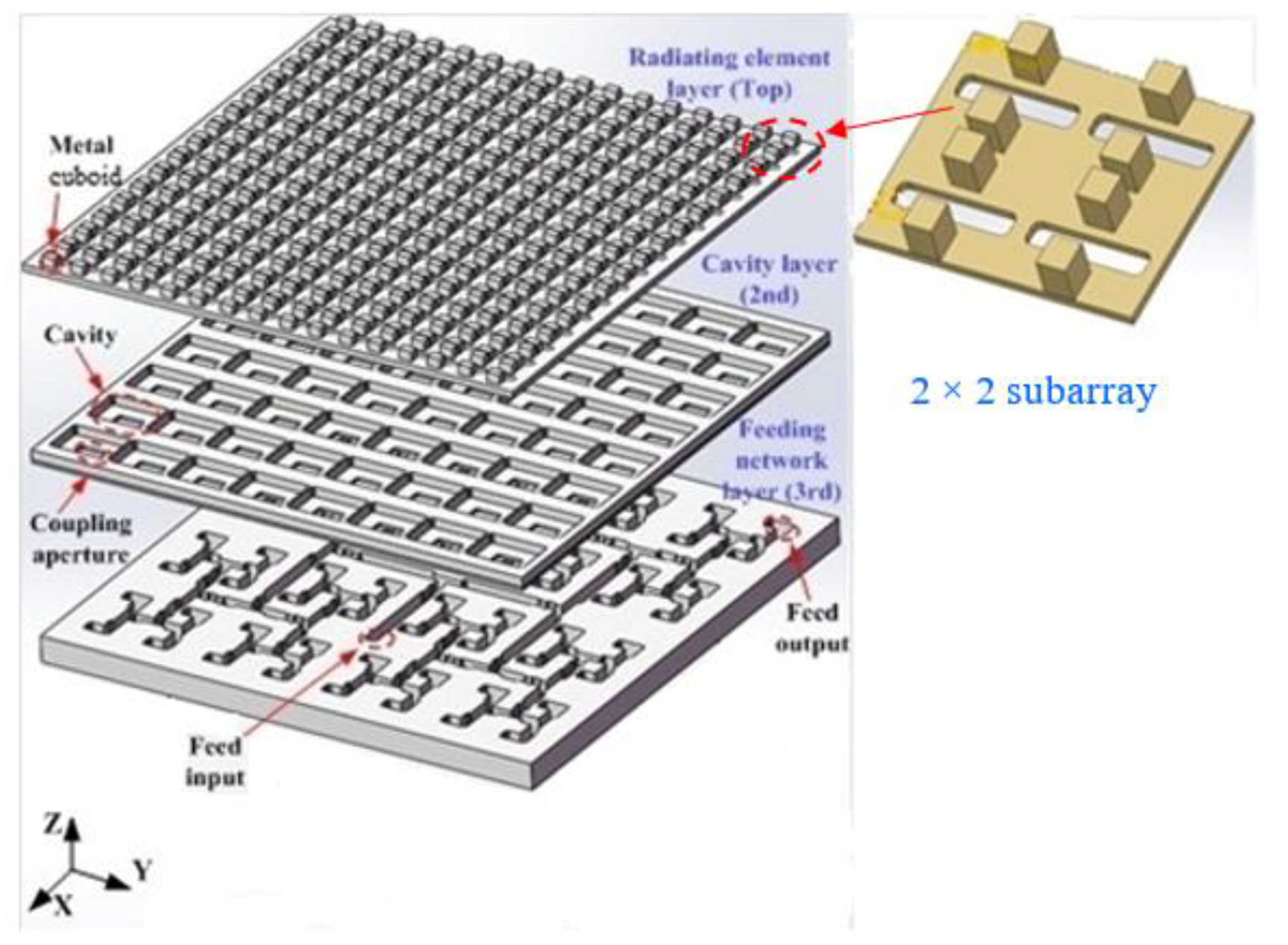
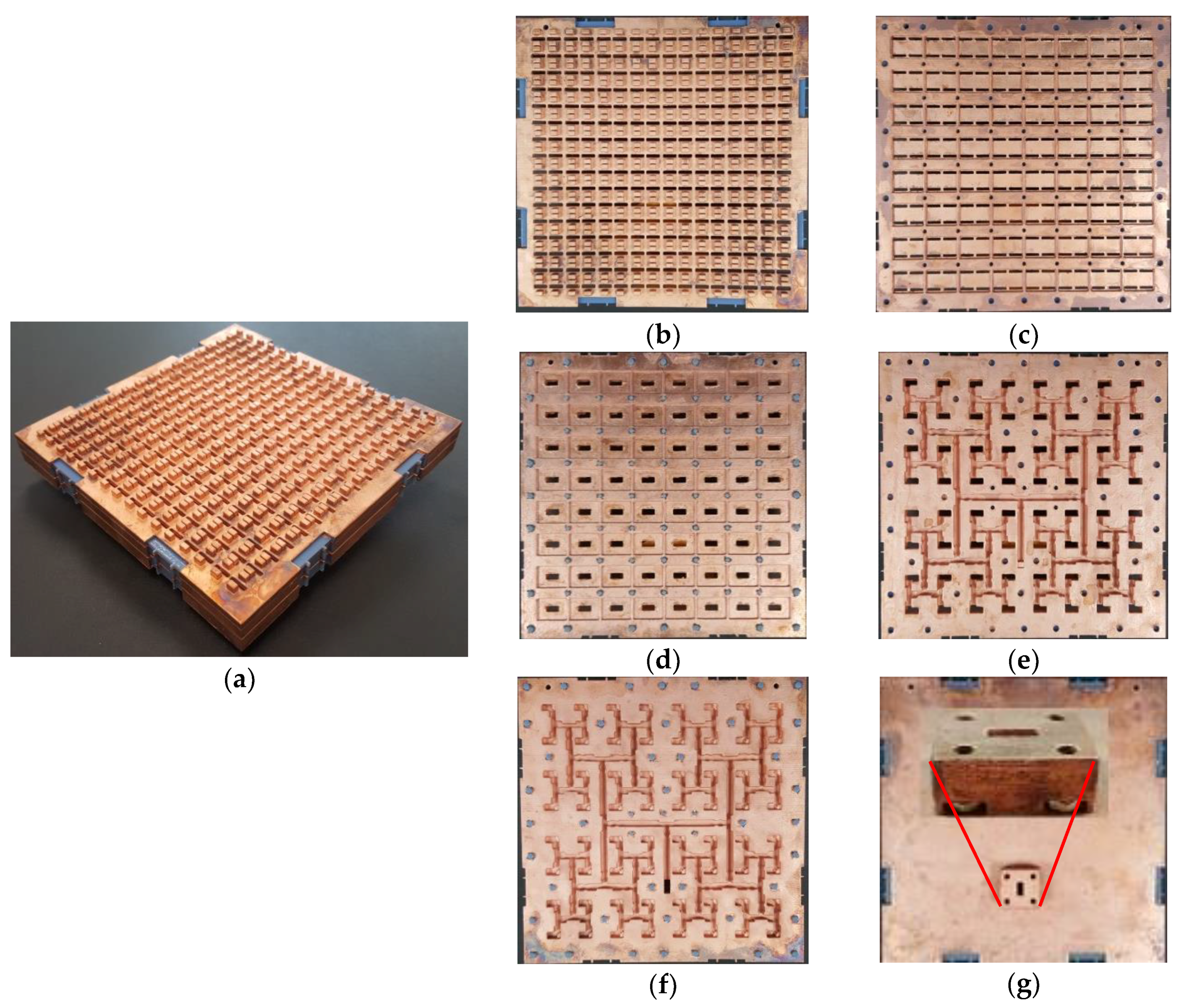
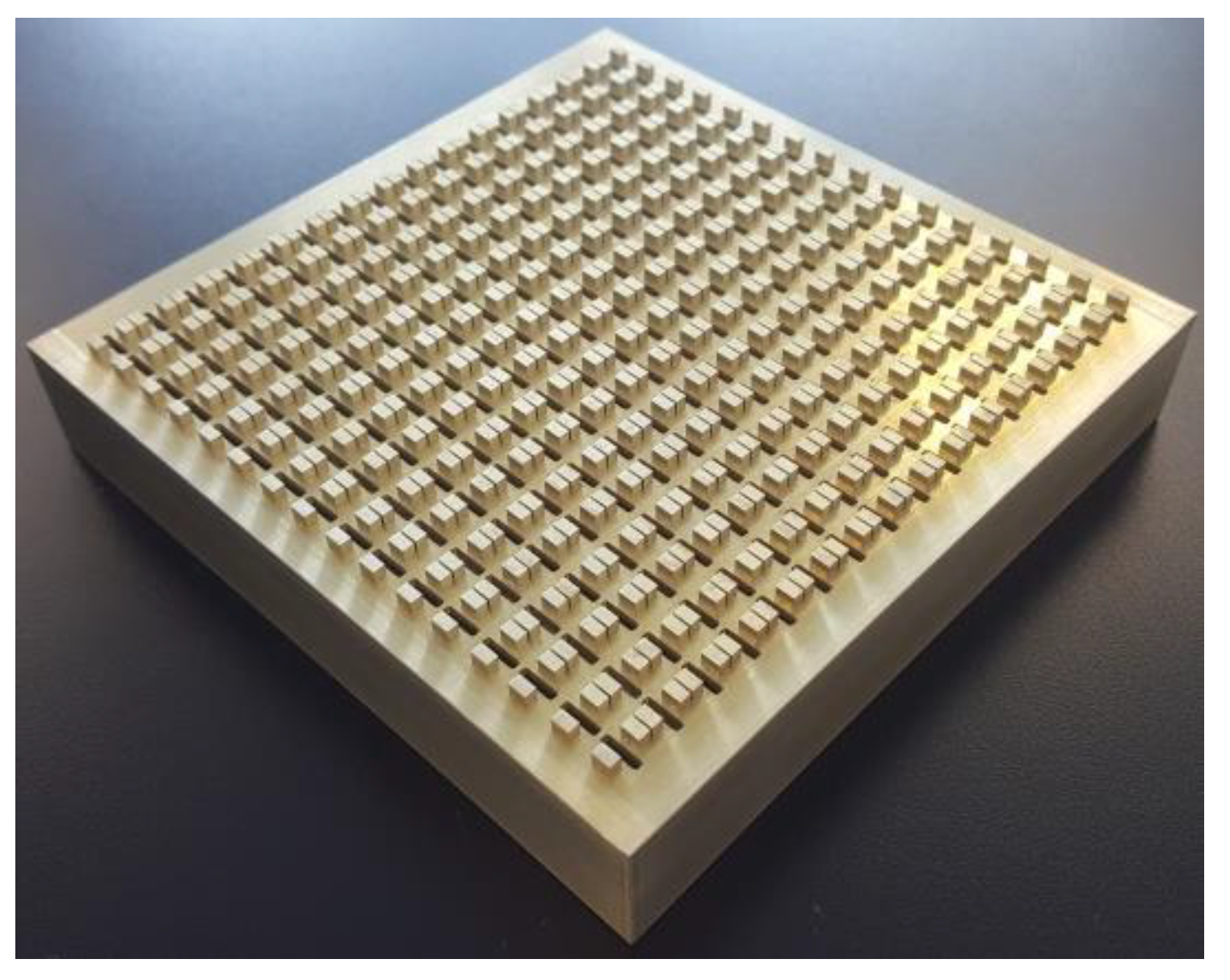
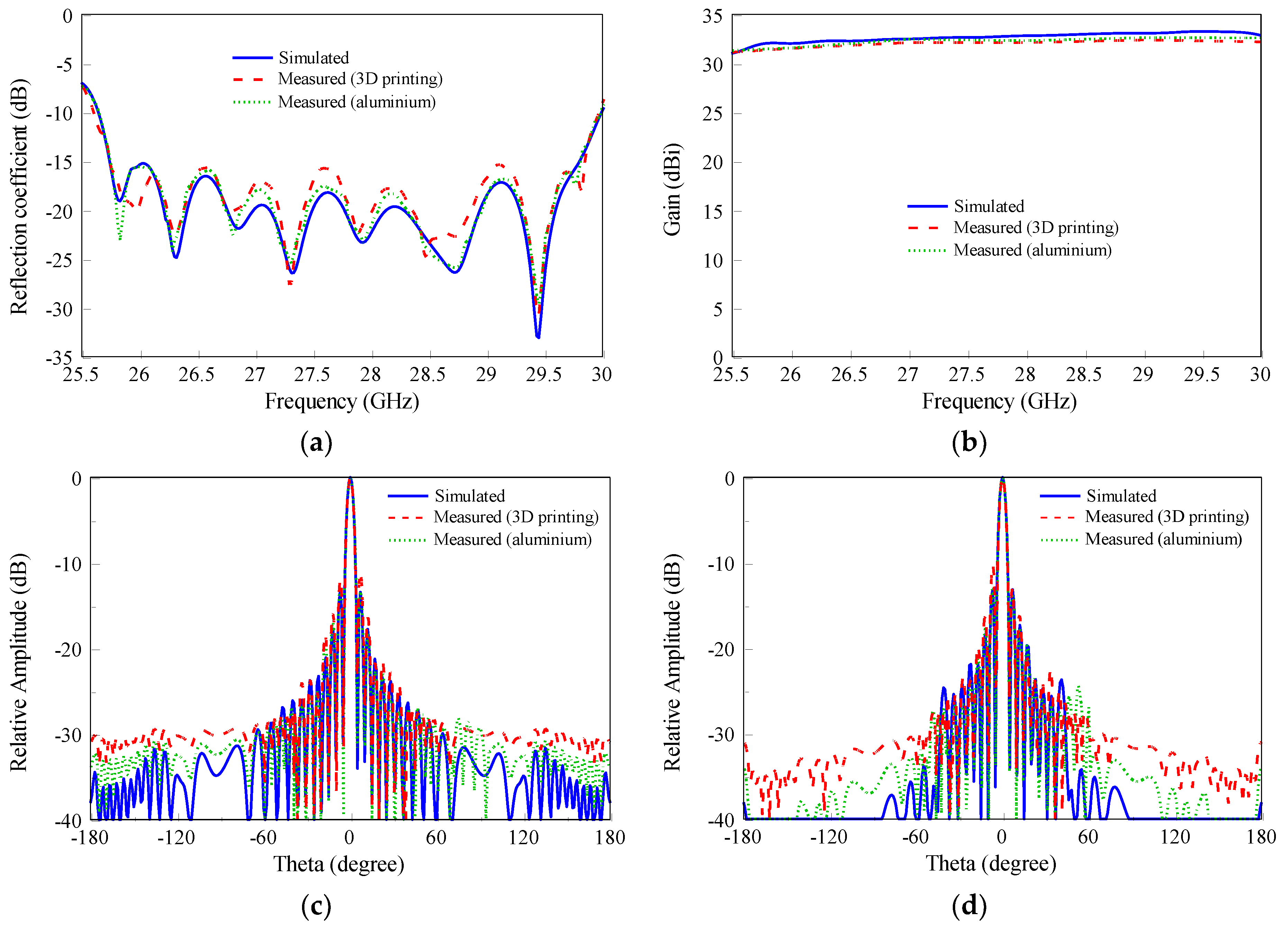
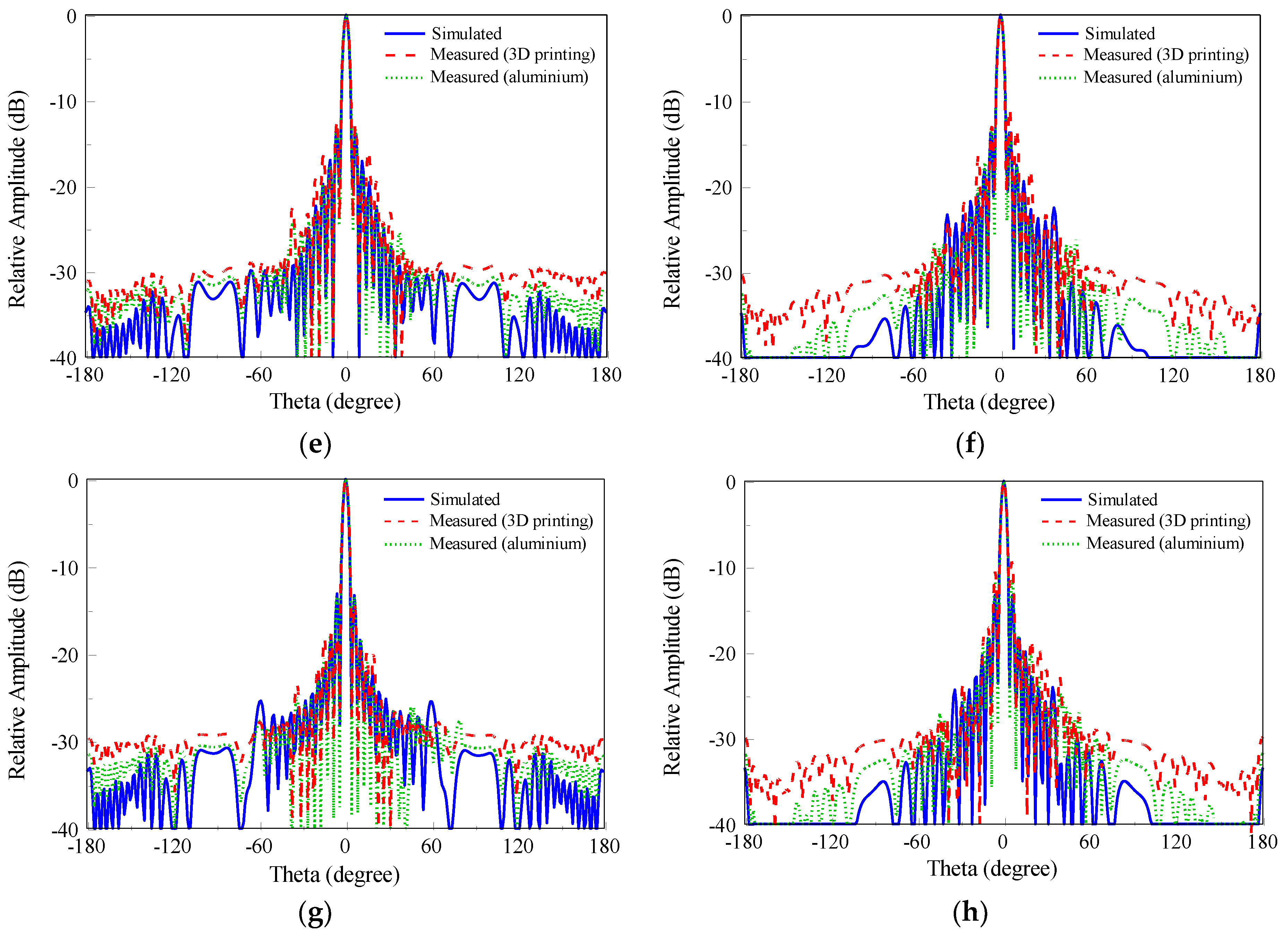
© 2018 by the authors. Licensee MDPI, Basel, Switzerland. This article is an open access article distributed under the terms and conditions of the Creative Commons Attribution (CC BY) license (http://creativecommons.org/licenses/by/4.0/).
Share and Cite
So, K.K.; Luk, K.M.; Chan, C.H.; Chan, K.F. 3D Printed High Gain Complementary Dipole/Slot Antenna Array. Appl. Sci. 2018, 8, 1410. https://doi.org/10.3390/app8081410
So KK, Luk KM, Chan CH, Chan KF. 3D Printed High Gain Complementary Dipole/Slot Antenna Array. Applied Sciences. 2018; 8(8):1410. https://doi.org/10.3390/app8081410
Chicago/Turabian StyleSo, Kwok Kan, Kwai Man Luk, Chi Hou Chan, and Ka Fai Chan. 2018. "3D Printed High Gain Complementary Dipole/Slot Antenna Array" Applied Sciences 8, no. 8: 1410. https://doi.org/10.3390/app8081410
APA StyleSo, K. K., Luk, K. M., Chan, C. H., & Chan, K. F. (2018). 3D Printed High Gain Complementary Dipole/Slot Antenna Array. Applied Sciences, 8(8), 1410. https://doi.org/10.3390/app8081410




